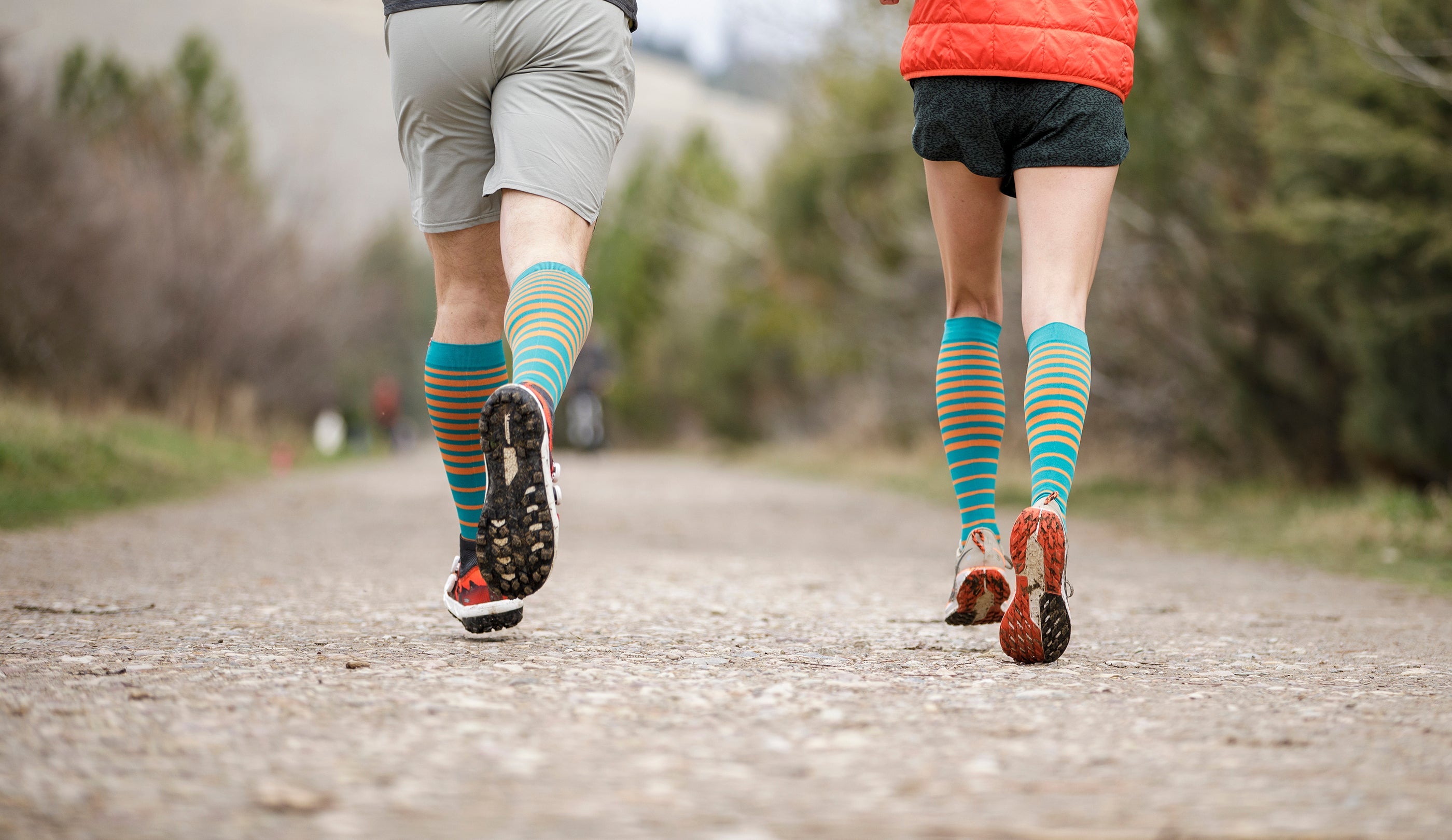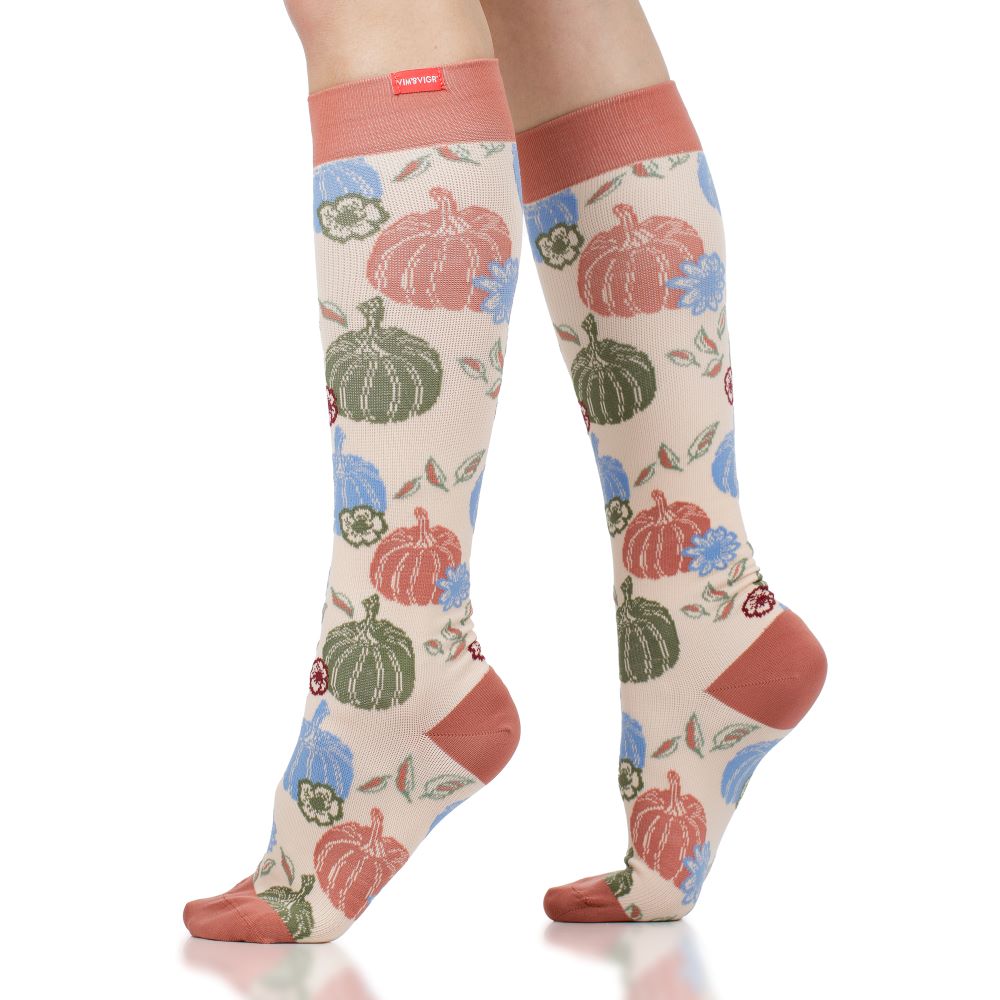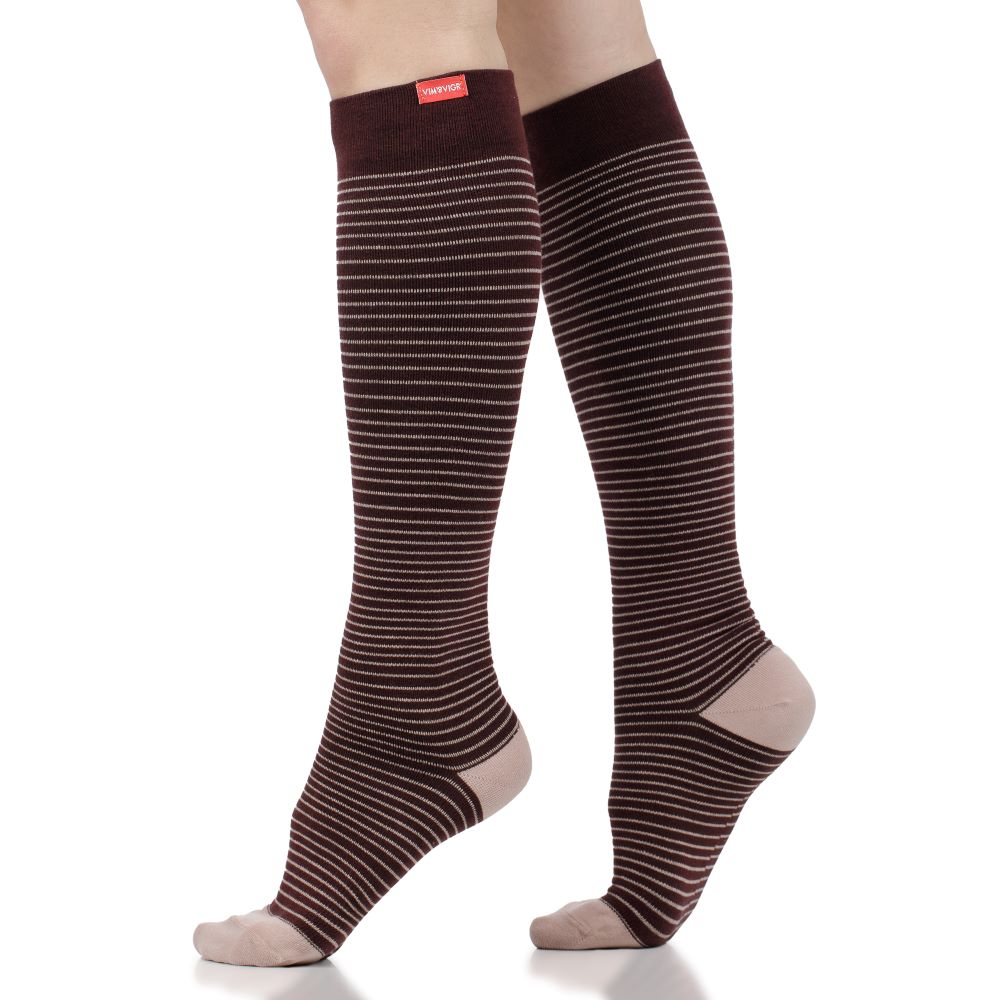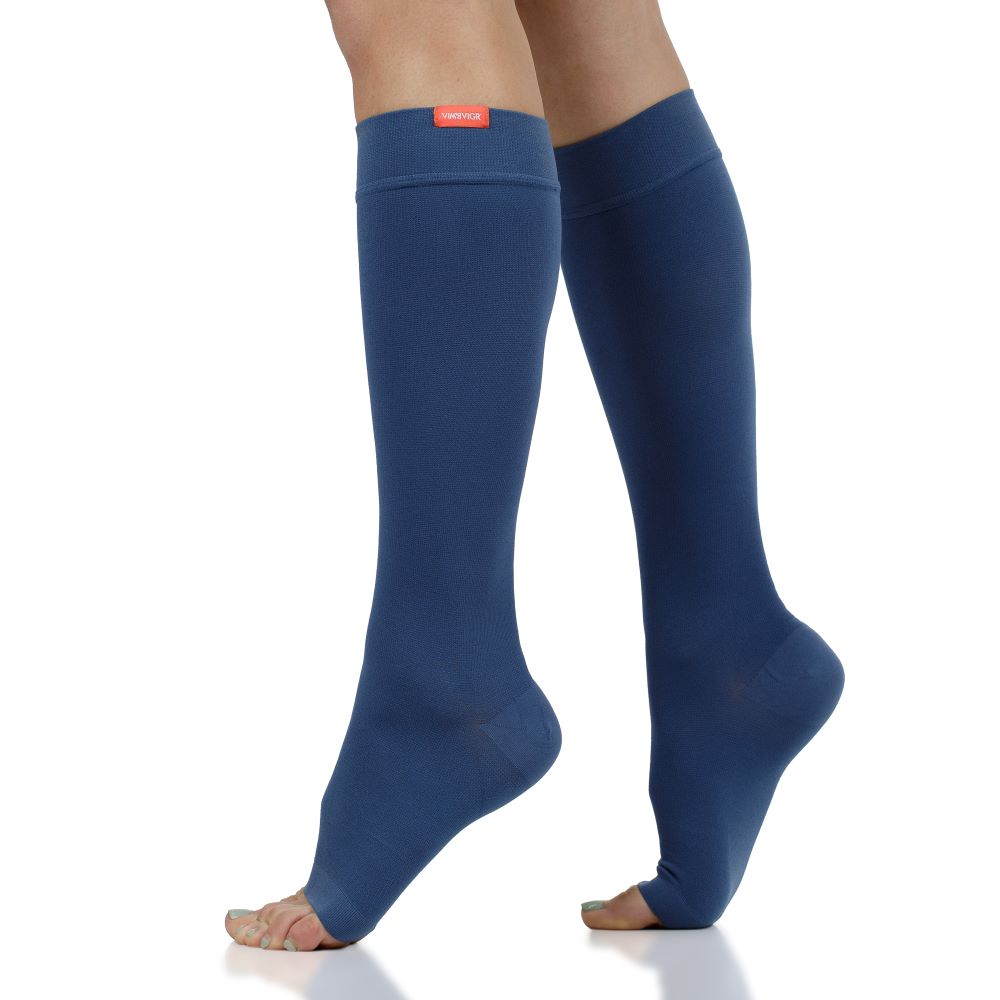Top Nurse Essentials: 15 Things Nurses Need
Written By Alecsa Stewart
Scientifically Reviewed by Daniel Chantigian
Life as a nurse is demanding, but rewarding. You have to be agile and on your feet all day while you provide essential care for others, but you also need to look after yourself to be in good shape and provide effective care for others.
This guide of nursing essentials covers all the supplies and nurse must-haves to keep you energized, well fueled, and in good health shift after shift. Read on to find out the top 15 things you can use to improve your everyday work life.
15 Nurse Essentials and Must Haves
From comfortable gear to healthy snacks and clever little accessories, here are our nurse must-haves to see you through the day or night.
1. Fun & Functional Compression Socks
Compression therapy is extremely beneficial for nurses. Because they’re on their feet a large part of the day or night, nurses can suffer from swelling, aching feet, or pain in the lower extremities. This is often caused by the constant effects of gravity pushing down on the blood vessels, which inhibits blood flow out of the legs and causes blood to pool in the lower legs. The build-up can cause inflammation and pain to lead to visible swelling.
You can prevent all this by wearing knee-high compression socks, which are clinically shown to boost peripheral blood flow. Graduated compression socks are tighter towards the ankles and then slowly release pressure. This helps “push” the blood up towards the heart, maintaining a healthy circulatory system and preventing swelling, pain, and any tingling feet. Research has shown that using compression therapy can reduce the risk of developing chronic venous disease, edema, leg ulcers, and more.
Standing for very long stints has also been linked to injuries of the legs and feet, like plantar fasciitis or bunions. While specific garments cannot in themselves cure such injuries, compression socks provide support to the lower legs and feet while boosting lower leg blood flow, which has been shown to speed up recovery and reduce symptoms.
Finally, wearing compression socks with your scrubs doesn’t have to be boring! The Vim & Vigr knee-high sock selection offers a wide variety of fun patterns and colors to brighten up your outfit and help you make a fashion statement on your shift. Besides, lifting your spirits means you’ll be happier working and helping others, which can bring many positive effects to the workplace.

Explore fun, comfortable, and effective compression socks for nurses
2. High-Quality Stethoscope, Pulse Oximeter, and Blood Pressure Cuff
Essential nurse accessories include stethoscopes, pulse oximeters, and blood pressure cuffs. It’s important to get high-quality products when it comes to tools like these as they are used frequently. Make sure you personalize them too (when appropriate). It’s easy to get your stethoscope mixed up with someone else’s on your ward, so add a name tag or a colored ribbon or sticker.
3. Nurse’s Watch with a Second Hand
In the world of smartwatches, it could be tempting to use a fancier machine for keeping time. But the traditional nurse’s watch, which you can easily attach to the top pocket of your scrubs, is a staple for a reason. It’s easier and more hygienic to have a traditional nurse’s watch than one you wear on your wrist - consider how often you’ll be washing your hands! Research has shown that wristwatches can increase the amount of bacteria on hands and wrists of nurses, so it is recommended to have a watch that is not attached to your wrist.
4. Comfortable Scrubs and a Scrub Jacket
Wearing comfortable clothing is not just a luxury, it’s an absolute essential for nurses who need to feel flexible, at ease, and ready to keep going throughout their shift. A high-quality set of scrubs will allow you to move comfortably while also being odor and wrinkle-resistant so you can be at your best throughout your shift.
Look for a good number of pockets, to allow you to carry essentials but without weighing you down. We recommend a good fabric mix to keep you warm or cool enough, depending on the temperature. Polyester with a spandex mix will be flexible while still looking tailored and professional.

5. Supportive, Non-Slip Shoes
As a profession where you’re on your feet throughout the day, nursing requires good-quality footwear. Good footwear can keep you comfortable for the duration of your shift without fearing blisters and hot spots. Look for shoes that support your feet - either your arches if you have flat feet, or good joint support for weaker ankles or Achilles’ tendons. Some stores will stock special nursing shoes, but some people may prefer running or walking shoes instead.
Combining comfortable and supportive shoes with compression socks is an ideal way to help your feet and lower legs stay healthy and energized throughout your shift. If you tend to suffer from sore feet or have weak arches, you can boost blood flow in the lower extremities to soothe the pain and feel additional support from high-quality compression socks like ours.
6. Hand Sanitizer
This may not be the most glamorous item on a nurse’s wish list, but keeping germs at bay is one of the biggest challenges. Always have a small bottle of hand sanitizer with you (in one of your pockets). It’s quick and easy to use, regardless of how busy you are. Research shows that having sanitizer on your person reduces the levels of bacteria on nurses’ hands throughout the day. Also, your patients will also have ease of mind if they see you sanitizing your hands!
Additionally, if you are not feeling 100% healthy, using a face mask is essential for a nurse. Consider having a few in your bag to put as needed and to provide for your colleagues if they are under the weather.
7. A Planner
Have too many things to keep in mind, patients with specific requirements, appointments, and commitments? A small planner can be handy, especially with an attached pen so you can have them together wherever you go. This could help you feel less overwhelmed and make it easier to keep track of your tasks. Just write down anything that comes to mind, so you do not forget it, and all those key dates and times, too.
8. Reliable Pens and Sharpies
Busy healthcare professionals will always need to write things down, even if it is just recommending a product to a patient and making sure they remember by writing it down on paper. Most importantly, as a nurse there are many commitments, details, patient requirements, and appointments to keep track of. Yes, a smartphone can keep track of these, but a traditional pen-and-paper method can be easier to use and is easy to carry with you in all settings.
9. Medical Scissors
Nurses need to cut through various materials for making bandages or opening packaging to get to tubes and syringes. Medical scissors are handy and safe - get a pair for yourself so you never have to borrow one!
P.S. A personalized pair of medical-grade scissors can be a great present for a new nurse - tell your friends!

10. Nurses’ Bag or Backpack
Backpacks are extremely versatile and more comfortable for nurses who are on long shifts and need to bring many essentials to work. You may want a change of clothes, snacks, extra toiletries… before you know it, a simple handbag simply will not be enough. Just continuing to use the bag you had in nursing school might not be enough.
We would recommend backpacks with built-in compartments that allow you to separate items for when you are likely to need them. It will also be easier to locate them. You can also use a more standard backpack with packing cubes inside for easy compartmentalizing.
11. ID Badge Reel
A badge reel is a must-have item for nurses. It keeps you from misplacing the badge and makes it easy to deploy if you need to open card-activated doors without having to fumble through your pockets. A fun badge reel can also make your patients and colleagues smile!
12. Portable Phone Charger
Even if you have easy access to a power source in your place of work, having a back-up portable phone charger means you will never be left without a phone charge. This is essential especially when you are heading home late at night, during your commute, or in between shifts. A portable phone charger has become a must-have item for anyone’s everyday bag, and it makes for a thoughtful gift, too.
13. Refillable Water Bottle
Staying well hydrated will help you keep your energy levels up and it is also a good way to avoid digestive issues and even circulatory problems! A key medical report states that optimal hydration levels help maintain a healthy blood flow, which reduces the risk of conditions like edema and varicose veins. A refillable water bottle is the best and most environmentally friendly way to do so, as you’ll have access to a safe water fountain in hospitals and clinics.
14. Healthy Snacks
While dehydration can slow down blood flow and lead to lower limb discomfort, too much salt in our food also has a similar effect by thickening the blood. Avoid swollen legs and feet by opting for healthy snacks, rather than potato chips from a vending machine with high levels of added salt. Too much sugar or highly processed foods can also be bad for your overall health and will simply give you “sugar spikes” without helping you have constant levels of energy.
Instead, prioritize a healthy mix of fruits and vegetables when you are snacking on your shift. Try protein-rich snacks to keep you feeling fuller for longer and supplement with fresh food that gives you extra hydration and freshness.
Finally, do not forget about healthy habits. While healthy foods and drinks are important, you can also improve your energy and focus levels with some gentle pre-shift mobility exercises and adding some stretches after your shifts to help muscles and tendons relax. It all helps.
15. Hand Cream
The final but still essential element of a nurse’s bag is a high-quality hand cream. We talked above about keeping yourself and your patients safe by regularly applying hand sanitizer. But, with repeated applications of astringent solutions like the ones in sanitizers, your hands will soon start to feel dry and uncomfortable. That is why we also advise adding a small hand cream or moisturizer to your list of nurse must-haves. Applying it a few times during your shift will increase comfort levels and keep you feeling and looking your best, too.
References
Guedes, P. M., Saldanha, N. A., Matos, P. M., Carvalho, F. S., Veiga, G., & Norton, P. (2020). Occupational leg edema-use of compression stockings. Porto biomedical journal, 5(6), e093. Read it here.
Dahm, K. T., Myrhaug, H. T., Strømme, H., Fure, B., & Brurberg, K. G. (2019). Effects of preventive use of compression stockings for elderly with chronic venous insufficiency and swollen legs: a systematic review and meta-analysis. BMC geriatrics, 19(1), 76. Read it here.
Charles, T., Mackintosh, D., Healy, B., Perrin, K., Weatherall, M., & Beasley, R. (2011). Merino wool graduated compression stocking increases lower limb venous blood flow: a randomized controlled trial. Advances in therapy, 28(3), 227–237. Read it here.
Waters, T. R., & Dick, R. B. (2015). Evidence of health risks associated with prolonged standing at work and intervention effectiveness. Rehabilitation nursing : the official journal of the Association of Rehabilitation Nurses, 40(3), 148–165. Read it here.
Montoye, A. H. K., Mithen, A. A., Westra, H. L., Besteman, S. S., & Rider, B. C. (2021). The Effect of Compression Socks on Maximal Exercise Performance and Recovery in Insufficiently Active Adults. International journal of exercise science, 14(7), 1036–1051. Read it here.
Jeans, A. R., Moore, J., Nicol, C., Bates, C., & Read, R. C. (2010). Wristwatch use and hospital-acquired infection. The Journal of hospital infection, 74(1), 16–21. Read it here.
Nyamadzawo, A., Nishio, J., Okada, S., & Nyamakura, R. (2020). Effect of using portable alcohol-based handrub on nurses' hand hygiene compliance and nasal carriage of staphylococcus aureus in a low-income health setting. American journal of infection control, 48(5), 473–479. Read it here.
Watso, J. C., & Farquhar, W. B. (2019). Hydration Status and Cardiovascular Function. Nutrients, 11(8), 1866. Read it here.


















Leave a comment